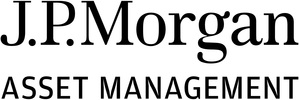J.P. Morgan Asset Management Launches Carbon Transition U.S. Equity ETF: JCTR
Aligned with JPMAM's Sustainable Investment Framework, the fund seeks to capture benefits from the transition to a lower-carbon economy and provide broader U.S. equity exposure
NEW YORK, Dec. 10, 2020 /PRNewswire/ -- J.P. Morgan Asset Management today launched the JPMorgan Carbon Transition U.S. Equity ETF (JCTR). The sustainable ETF will offer core exposure to U.S. equities with a low tracking error, compared to the Russell 1000 Index, and aim to have a meaningful reduction in carbon intensity.
JCTR will use a forward-looking proprietary research framework to identify which companies, across all sectors, may be best positioned to benefit from the transition to a low carbon economy. JCTR will track the JPMorgan Asset Management Carbon Transition U.S. Equity Index, which was built to achieve a meaningful reduction in carbon intensity without relying on exclusions or sector deviations. JCTR will seek to offer investors at least 30% less carbon intensity than the Russell 1000 index, and a year-on-year de-carbonization target of at least 7%, in line with EU Climate Transition Benchmark (CTB) framework for sustainable investing.
JPMAM Carbon Transition Investment Framework
Created by JPMAM's Sustainable Investing and Quantitative Beta Solutions (QBS) teams, the carbon transition investment framework underpinning the new index is constructed to help mitigate the risks of climate change by reducing carbon emissions and leaning into the opportunities and technologies required for a successful transition to a low carbon world. The framework, which was applied to a Large Cap US Equity starting investment universe, seeks to differentiate the leaders from the laggards by evaluating:
- Emissions: How companies manage their greenhouse gas (GHG) emissions
- Resource Management: How companies manage their resources, including water, waste, and electricity usage
- Risk Management: How companies manage other climate-related risks such as physical and reputational risks
The framework imports primary data sourced directly from companies, as well as alternative data sources from ThemeBot, JPMAM's proprietary natural language processing tool, which can capture a range of innovative signals, such as a company's green capital expenditure. The framework's ratings will then determine which companies are emphasized, through underweight and overweight positions, without taking sector bets.
Jennifer Wu, Global Head of Sustainable Investing at J.P. Morgan Asset Management, comments: "Investing in carbon transition aware strategies needs to start now. Differences are emerging between the potential winners and losers in the low carbon transition, and by acting early, before climate risks and opportunities are fully priced in, investors can capture potentially significant returns as prices continue to adjust. We've had interest from a range of clients looking to leverage our framework to help meet their specific sustainable investment goals."
Bryon Lake, Head of Americas Client ETF, J.P. Morgan Asset Management, comments: "As investors ready portfolios for the transition to a lower-carbon future, we're excited to meet our clients in the new decade with JCTR. Our sustainable strategy allows investors to embrace long-term carbon transition trends and consider the most relevant risks and opportunities across all sectors, while maintaining a low tracking error and cost-efficiency."
With the addition of JCTR, J.P. Morgan Asset Management's U.S. ETF suite now features 32 product offerings with more than $40 billion in assets under management. J.P. Morgan Asset Management ranks as a top ten ETF issuer in respect to AUM and ranks in the top five in net new assets for 20201.
About J.P. Morgan Asset Management
J.P. Morgan Asset Management, with assets under management of USD 2.3 trillion (as of 30 September 2020), is a global leader in investment management. J.P. Morgan Asset Management's clients include institutions, retail investors and high net worth individuals in every major market throughout the world. J.P. Morgan Asset Management offers global investment management in equities, fixed income, real estate, hedge funds, private equity and liquidity.
JPMorgan Chase & Co. (NYSE: JPM) is a leading global financial services firm with assets of $3.2 trillion and operations worldwide. The Firm is a leader in investment banking, financial services for consumers and small businesses, commercial banking, financial transaction processing, and asset management. A component of the Dow Jones Industrial Average, JPMorgan Chase & Co. serves millions of customers in the United States and many of the world's most prominent corporate, institutional and government clients under its J.P. Morgan and Chase brands. Information about JPMorgan Chase & Co. is available at www.jpmorganchase.com.
Investors should carefully consider the investment objectives and risks as well as charges and expenses of an ETF before investing. The summary and full prospectuses contain this and other information about the ETF and should be read carefully before investing. To obtain a prospectus: Call 1-844-4JPM-ETF.
J.P. Morgan Asset Management is the marketing name for the asset management businesses of JPMorgan Chase & Co., and its affiliates worldwide.
J.P. Morgan ETFs are distributed by JPMorgan Distribution Services, Inc., which is an affiliate of JPMorgan Chase & Co. Affiliates of JPMorgan Chase & Co. receive fees for providing various services to the funds. JPMorgan Distribution Services, Inc. is a member of FINRA. More information is available at https://am.jpmorgan.com/us/en/asset-management/gim/adv/products/etfs.
If you are a person with a disability and need additional support in viewing the material, please call us at 1-800-343-1113 for assistance.
NOT FDIC INSURED | NO BANK GUARANTEE | MAY LOSE VALUE
1 Data according to ETFdb.com as of December 9, 2020. |
||
SOURCE J.P. Morgan Asset Management

Related Links
WANT YOUR COMPANY'S NEWS FEATURED ON PRNEWSWIRE.COM?
Newsrooms &
Influencers
Digital Media
Outlets
Journalists
Opted In






Share this article